
Graphic illustrates Kotter’s Dual Operating System of a network for flexibility and a hierarchy for efficiency
Source: Scaled Agile’s “SAFe White Paper”
Systems thinking is a discipline for seeing wholes. It is a framework for seeing interrelationships rather than things, for seeing patterns of change rather than static ‘snapshots.’
Peter Senge, MIT Lecturer and author of The Fifth Discipline1
Continuing, and justified, interest in agile and lean-agile
Since posting our Point of View, “Why Agile Management? Because it is an increasingly VUCA world,” it has become our most read POV.2 So, we followed our experience and our research to focus on a logical next step to better results through business agile- a focus on “How.”
We take a holistic approach3 to achieving results. It is one of our guiding principles.4 We considered the “how” of agile’s various methodologies through the lens of the breadth and depth of our general management consulting experience. We followed agile’s development from the Manifesto for Agile Software Development (c. 2001) to confluence with, for example, more familiar methodologies, including Toyota Production System’s basis for Lean.
For example, a recent McKinsey article explores how the combination of lean and agile “complement each other in ways that increase the impact they generate.”5 The McKinsey authors further posit lean and agile “share a set of [four] foundational objectives,”6 and they demonstrate the strength from different combinations of lean and agile team models are most appropriate for situations of varying “nature of demand” (variable to predictable) and of varying “nature of activity” (repeatable, operational to creative customer facing).7
Our point of view for an enterprise, scalable agile methodology is best met by Scaled Agile’s Scaled Agile Framework (SAFe).
Because the Scaled Agile Framework is so broad and comprehensive, we have broken our point of view for “How to adopt agile business practices” into two abridged parts.
- Part 1 of 2: Basic Concepts, (this article) founded in familiar concepts, but with SAFe’s unique spin on both of lean and agile as seen through NextForge’s general management business perspective.
- Part 2 of 2: Scaled Agile Framework- a SAFe 5 flyby– to give you a sense of the breadth and depth of coverage, including our perspective on how to think about the extensive number of elements (more than 100 in list form mapped into 7 groups to ease understanding) of the SAFe framework as a whole- clearing the “Big Picture”- beyond what is covered in some introductory SAFe training courses.
Why we like the Structured Agile Framework
We like SAFe for a number of reasons. However, underlying all of these reasons is SAFe’s unique combination of proven management concepts we are all familiar with coupled with the SAFe Framework’s flexibility. The following begin to illustrate in a bit more detail why we like SAFe’s Structured Agile Framework.
It focuses on results
- Business Results include: Faster time to market, Increased quality, Increased productivity, Increased employee engagement8
- Business agility through customer centricity9 at capabilities, program iteration, demo, solution and portfolio level
It is a customizable framework
- SAFe builds on and incorporates many familiar management concepts. For example, Deming for quality, The Toyota Production System for lean, Kotter for Change and the dual operating system, Kanban and Scrum.
- SAFe encourages you to use what is necessary out-of-the-box, and to refine and complement concepts and sub-frameworks to fit your culture.
- The “Big Picture” graphic interface allows you to see the entire picture and easily click down to more detail for better understanding
Its content is constantly improving
- “Out of the box” artifacts are being refined, revised and updated
- Organization-specific learning can complement version-based improvements
It incorporates progressive elaboration
- Cadence sets learning points of progressive elaboration10 (“We know more now than when we started”)
- Cadence allows efficient periodic reprioritization and reallocation of resources while preserving increments of value delivery
It scales
- As one of our guiding project and process principles: only add enough structure to manage the risk; activated only the “success pattern” needed for a particular instance of a configuration11
- The comprehensive tool, artifacts, and processes, from the Enterprise Agile Framework leading in both implementations and considerations, support from ad-hoc to full configuration of business agility.12
- Established configurations13 depend on the results to be accomplished
- Essential: Minimal set of roles, events, and artifacts required to continuously deliver business solutions
- Large: Additional roles, practices, and guidance to build and evolve the worlds largest applications, networks and cyber-physical systems
- Portfolio: Minimum set of competencies and practices that can fully enable enterprise and division business agility
- Full: Most comprehensive configuration, including all 7 core competencies needed for business agility
We believe there are a few bedrock concepts SAFe builds on, and we would like to introduce you to them- specifically, SAFe’s view of Lean and Agile.
Introduction to SAFe’s Lean-Agile Mindset
For an organization to be successful with SAFe, the organization must ensure the culture, leaders and managers all have a “lean-agile mindset.” We are going to take a quick walk around the primary components (the basic concepts) of Lean and Agile integrated in the SAFe framework.
Lean
Lean has been a popular management concept for some time. With its roots in The Toyota Production system, as a concept it can stand alone14, and, over time, lean has been combined with a number of other popular management concepts. As a sampler, here are a few titles including lean from my bookshelf: Lean Thinking (Womack, 1996), Lean Six Sigma (George, 2002), and Lean Startup (Ries, 2011).
SAFe considers this “House of Lean” model with the focus on the Goal: “Value in the shortest sustainable lead time”.
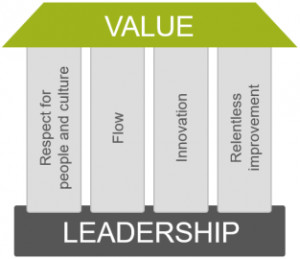
The lean goal is supported by four pillars briefly summarized in the following15:
- Respect for people and culture– a generative culture in a performance-centric environment
- Flow– a continuous flow of work supporting incremental value delivery based on constant feedback and adjustment; includes eliminating waste and removing delays of long-lived value streams
- Innovation– provide the time and space to innovate at all levels; includes gemba- “go see”
- Relentless improvement– based on a learning organization; includes a systemic perspective
Leadership supports organizational change and scale to complement agile’s team-based process. Also see our article “Agile Leadership for Organizational Adaptability, At-A-Glance.”
Agile
While there is a direct connection to agile for software development, agile has its background in physical product manufacturing at Fuji, Xerox and Honda16. Agile for software development extends back to the Agile Manifesto, c. 2001 based in part on a paper discovered by Jeff Sutherland, creator of Agile Manifesto and Scrum, in 1986.
The Business-Agile Leadership Team’s Manifesto, like the Manifesto for Agile Software Development, focuses on minimalist or lean thinking.
| Agile Software Development17 | Agile Business & Leadership (Working Draft)18 |
|---|---|
| That is, while there is value in the items on the right [in each statement], we value the items on the left more. | That is, while there is value in the items on the right [in each statement], we value the items on the left more. |
|
|
|
|
|
|
|
|
Sources: See endnotes; NextForge analysis for Agile Business and Leadership
Business Agility Definition, Core Values and Principles
“Business Agility is the ability to compete and thrive in the digital age by quickly responding to market changes and emerging opportunities with innovative business solutions.”19
We believe the “how to” of lean and agile are best illustrated in SAFe’s Core Values and Principles20
Core Values
Alignment
Built-in Quality
Transparency
Program Execution
Principles (See Flyby appendix B.4.1-10 for definitions)
- Take an economic view
- Apply systems thinking
- Assume variability; Preserve options
- Build incrementally with fast, integrated learning cycles
- Base milestones on objective evaluation of working systems
- Visualize and limit WIP, reduce batch sizes and manage queue lengths
- Apply cadence; Synchronize with cross-domain planning
- Unlock intrinsic notification of knowledge workers
- Decentralize decision-making
- Organize around value
Nothing is perfect
There are some things about the Structured Agile Framework (SAFe 5.0) which give us a pause for concern, including:
- The SAFe framework is complicated
- Lumpiness of components of the SAFe 5.0 framework. Some areas of the framework are well defined and tight, with other areas not as immediately clear. For example, we have only been able to find a definition for Built-in Quality of the 4 Core Values.
- Mixing of academic, time-proven concepts and research with pop management (e.g., Drucker and Pink; Kotter and Heath Brothers21)
- Tweaking well-known management frameworks for no apparent reason
- Shewart’s/Deming’s “Plan-Do-Study (Check)-Act” to “Plan-Do-Check-Adjust”)
- Agile sprints versus SAFe’s increments
- Scaling is not intuitive
- Essential is basic building block and is included in all configurations
- Large Solution is composed of Essential + Large Solution
- Portfolio is composed of Essential + Portfolio (does not include Large Solution)
- Full is composed of all configurations (Essential + Large Solution + Portfolio)
- Essential’s Agile Release Train is meant to be a continuous process, not a discrete one-off project
Overall, the SAFe framework, like so many we currently use to help us think, manage and lead is rigorous and a formal broad-reaching approach to business solutions small and large.
Next Steps: Getting into the details
SAFe is a scaled agile framework. It is able to support a range of organizational scopes spanning from ad hoc agile practices to an integrated, continuously improving enterprise-level approach to “the way we do things around here.”
In this article, we explored the conflation of lean and agile at a conceptual level- providing the bedrock foundational mindset for agile leaders. In our second of two articles, “How To Adopt Agile Business Practices: SAFe 5.0 Flyby,” we begin to dive into the details, including an introduction into a 7-bucket organizing concept for SAFe (Note: some of the organizing buckets we will share with you are explicit- if you dig deep enough- in the SAFe methodology, and some we created to bring a collectively-exhaustive thinking-wrapper to the framework).
No matter where you are in your agile thinking, be it “just considering” or “ready to expand penetration enterprise-wide,” we feel SAFe can be a great resource for how to adopt business agile practices.
Click here to continue to see “How to adopt agile business practices” with a flyby of the detail and overall organizing framework which makes up the Structured Agile Framework (SAFe).
The content summarized above is sourced primarily from various SAFe 5.0 artifacts including the SAFe website and Knaster, et al, SAFe Distilled, Achieving business agility with the scaled agile framework® (Pearson, Addison-Wesley, 2020).
END NOTES
__________________________
- See Senge, The Fifth Discipline (NY, NY: Doubleday-Currency, 1990) page 68
- According to Google Analytics “Why Agile Management? Because it is an increasingly VUCA world” is the most read NextForge point of view for both calendar year 2019 and 2020
- See Senge, The Fifth Discipline (NY, NY: Doubleday-Currency, 1990) page 68
- See NextForge “Guiding principles” https://nextforge.com/services-of-nextforge-general-management-consultants/ [internet cited 1.3.2021]
- De Raedemaeker, et al, “Lean management or agile? The right answer may be both,” McKinsey Operational Practice article, July 14, 2020 [internet cited 1.3.2021] Beyond the quote, also note two case studies with differing bias of agile and lean systems
- De Raedemaeker, et al, “Lean management or agile? The right answer may be both,” McKinsey Operational Practice article, July 14, 2020 [internet cited 1.3.2021] See four common foundational objectives, Exhibit 1
1) Connecting strategy, goals, and meaningful purpose,
2) Discovering better ways of working,
3) delivering value efficiently to the customer, and
4) Enabling people to lead and contribute to their fullest potential - De Raedemaeker, et al, “Lean management or agile? The right answer may be both,” McKinsey Operational Practice article, July 14, 2020 [internet cited 1.3.2021] See Exhibit 3 “Different lean-management and agile team models are suited to different activities.”
- For more detail see Knaster, et al, SAFe Distilled, Achieving business agility with the scaled agile framework®, (Pearson, Addison-Wesley, 2020) Fig 2.1, page 13
- For more detail see Knaster, et al, SAFe Distilled, Achieving business agility with the scaled agile framework®, (Pearson, Addison-Wesley, 2020) Fig 2.3, page 15
- Progressive elaboration is a project management concept relevant to waterfall and agile type projects defined by the Project Management Institute. See Progressive Elaboration https://www.projectmanagement.com/wikis/295452/Progressive-Elaboration [internet cited 12.19.2020].
“Progressive elaboration involves continuously improving and detailing a plan as more detailed and specific information and more accurate estimates become available. Progressive elaboration allows a project management team to define work and manage it to a greater level of detail as the project evolves.“In agile approaches, progressive elaboration is achieved by short iterations or development cycles with a step of refining the backlog at the beginning of (and sometimes during) an iteration. In iterative projects, rolling wave planning is a common technique of progressive elaboration. - For more detail see Knaster, et al, SAFe Distilled, Achieving business agility with the scaled agile framework®, (Pearson, Addison-Wesley, 2020) page 20
- See “Survey Analysis: Enterprise Agile Frameworks Maximize Potential for Achieving Agility at Scale,” Gartner, 2018. EAF’s evaluated include Scaled Agile Framework (SAFe), Large-Scale Scrum (LeSS), Spotify, Disciplined Agile (DA), and Nexus
- For more detail on configurations see Knaster, et al, SAFe Distilled, Achieving business agility with the scaled agile framework®, (Pearson, Addison-Wesley, 2020) pages 17 to 20
- There are a number of definitions of lean. From the Lean for Dummies (Sayer et al, 2007) can be as simple as “Eliminate waste, add customer value, and improve performance” (cover) or as expansive as “Lean is a business strategy based on satisfying the customer by delivering quality products and services that are just what the customer needs, when the customer needs them, in the amount required, at the right price, while using minimum materials, equipment, space labor and time” (page 12). According to Sayer, the principles and practices of lean date back to the late 1980’s (page 19) and the Toyota Production System “TPS is the birthplace of lean” (page 21)
- For more detail see Knaster, et al, SAFe Distilled, Achieving business agility with the scaled agile framework®, (Pearson, Addison-Wesley, 2020) pages 26-30.
- See Darrell Rigby interview transcript, “Staying Agile Beyond a Crisis,” HBR IdeaCast, Episode 742, May 26, 2020, https://hbr.org/podcast/2020/05/staying-agile-beyond-a-crisis [internet, cited 12.19.2020] “agile did not begin in technology or software development. It began much earlier. Fuji and Xerox and Honda were developing physical products… …Sutherland who co-created the Scrum method and he came across a paper in 1986 called the ‘New, New Product Development Game’ that said, this is the way innovation teams should work. And so, he adapted the methodology to fit software development and it took off very, very quickly.”
- See “Manifesto for Agile Software Development,” https://agilemanifesto.org/ [internet, cited 12.19.2020]
- Inspired by Rigby, et al, “The Agile C-Suite,” Harvard Business Review, May-June 2020 pages 64-73
- See Glossary, Knaster, et al, SAFe Distilled, Achieving business agility with the scaled agile framework®, (Pearson, Addison-Wesley, 2020) page 267
- The 10 SAFe core values and principles are cited in various SAFe 5.0 resources including https://www.scaledagileframework.com/posters/. The letter numeric code corelates with detailed appendix in “How Adopt Business Agile: Structured Agile Framework- A SAFe 5.0 Flyby”
- For more example of Scaled Agile’s use of pop business concepts e.g., Heath brothers, see Knaster, et al, SAFe Distilled, Achieving business agility with the scaled agile framework®, (Pearson, Addison-Wesley, 2020) page 73


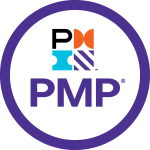
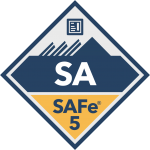
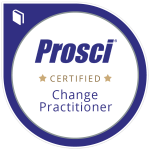

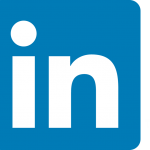

One Response